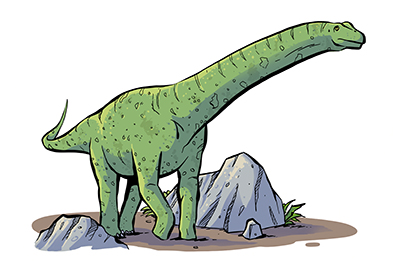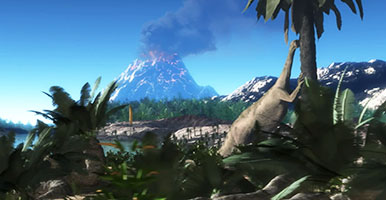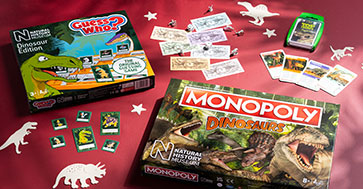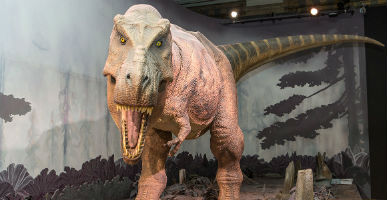Puertasaurus
Puertasaurus
- Pronunciation:
- PWER-ta-sore-us
- Name meaning:
- 'Puerta and Reuil's lizard'


- Type of dinosaur:
- sauropod
- Length:
- 30.0m
- Diet:
- herbivorous
- How it moved:
- on four legs
- When it lived:
- Late Cretaceous, 76-70 million years ago
- Found in:
- Argentina
Puertasaurus was a giant sauropod dinosaur in the titanosaur group. It lived towards the end of the Cretaceous Period.
Very few fossils of this dinosaur have been found - only four bones belonging to a single individual. These include one neck bone, one backbone and two tail bones that were all unearthed in Argentina in 2001.
Like all sauropods, Puertasaurus was a plant-eating dinosaur. The researchers who discovered its remains also found fossilised tree trunks nearby. This suggests that it may have lived in a forest habitat.
The dinosaur's full name - Puertasaurus reuili - refers to two fossil hunters who discovered and worked on the remains: Pablo Puerta and Santiago Reuil.
Was Puertasaurus the largest dinosaur?
With so few Puertasaurus fossils to study, it's not possible to say once and for all how big this dinosaur would have been when it was alive.
However, the existing remains are so enormous that scientists believe that Puertasaurus may have been among the very largest dinosaurs. Current estimates are that it was about 30 metres long and weighed about 50 tonnes.
Many experts think it is likely that Puertasaurus would have rivalled other titanosaurs like Argentinosaurus and Patagotitan in size, but nobody can say for sure which was the largest.
Taxonomic details
- Taxonomy:
- Dinosauria, Saurischia, Sauropodomorpha, Sauropoda, Eusauropoda, Neosauropoda, Macronaria, Camarasauromorpha, Titanosauriformes, Titanosauria
- Named by:
- Novas, Salgado, Calvo and Agnolin (2005)
- Type species:
- reuili

Step back in time
Find out more about dinosaurs' lives and the world they lived in.

Fun and games
Learn more about dinosaurs through toys, board games and activity kits, available from our online shop.

Dinosaurs gallery
Roarrr. Come face-to-face with some of the Museum's most famous dinosaurs.




